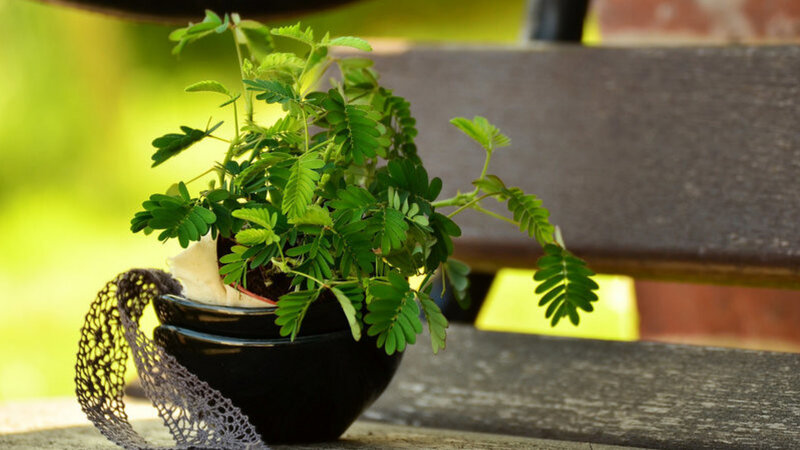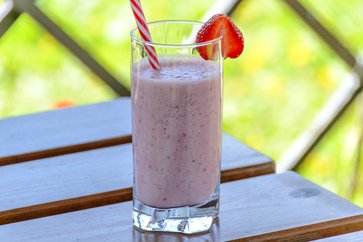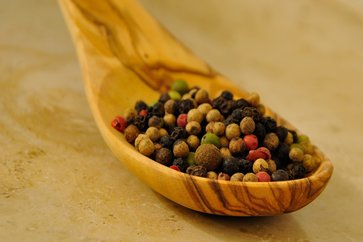Chui Mui Plant In English – Its Uses And Health Benefits
Chui mui plant in English is known as “touch me not plant” or “sensitive plant.” It is so-called because the plant responds when exposed to touch, its leaves go falter with sink and after some time it re-opens.

It reacts when the force is applied to a plant knowing or unknowingly, it is sensitive to animals, to light at the time of day, daily dew, insect contact, etc.
Chui mui plant in English is also known as “Mimosa Pudica”, the name which derived from the two Latin words “Mimosa” for “Mimic” which means the sensitivity of the leaves, and “Pudica” means “shy” shying away or shrinking These plants are native to South America and Central America.
Why Does Chui Mui Leave Close When Touched?
Why do the leaves touching me not plant droop when touched? There are several theories given behind the sensation of the Chui mui plant. It is believed that the potassium drifts from the motor neuron to the intercellular spaces after a stimulant of Mimosa.
The researchers suggested that potassium may be an osmotic agent that may be responsible for the decreased turgor pressure causing seismonastic in Pulvinar during the reaction.
It was also found that the outflow of the potassium in pulvinar in Mimosa cells increases substantially during seismonastic response thereby increasing potassium levels in the external solution and decreasing in potential was also discovered.
Common Indian Names
- Sanskrit: – Lajja
- Bengali: – Lajjabati
- Malayalam: – Tintarmani
- Chui mui plant in English: – Sensitive plant
- Hindi: – Laajvanti and Chhui-mui
- Telugu: – Attapatti and Peddanidrakanni
- Tamil: – Tottaaladi and Thottalchnungi
- Kannada: – Lajja, Nachika, and Mudugu-davare
How to Identify Touch Me Not Plant
Overview
Mimosa pudica is a short-lived shrub that usually grows to 50-70 cm tall (about 1 m ) and when supported it possibly will rise more than 2m stretching straight. It is a sprawling thorny sub-shrub with branches having scattered stings about 2-2.5 mm long or is occasionally whiskered or sometimes almost hairless.
Leaves
The leaves are alternative bipinnate they do not have prickles and are very reactive to touch. The axis of the compound leaf is 1.5 to 5.5 cm long, and the pinnae (primary partitions of the compound leaf) are sub-digitate (almost finger-like ledges). There are 10-26 pairs of leaflets (the shortest sections through the leaf) per pinna, which are 6-15 x 1.2-3 mm and linear-oblong.
Flowers
The flowers are lilac-colored or pinkish ball-shaped heads and are held in oval-shaped tailed heads of 1-1.3 x 0.6-1 cm. A cluster of 1 to 5 flower heads is born in the leaflet axil. The calyx is minute, about 0.2 mm long. The corolla is 2-2.3 mm long and consists of four stamens. Blossoming occurs from August to October in Indian conditions.
Fruits
It has bunches of 2-8 pods that are around 1.8 cm x 3-5 mm, densely thorny flocked, and have prickled along their edges.
Roots
Characteristics 6-8 layers of covering cells. The secondary cerebral cortex consists of thin-walled parenchyma packed with granules. The cells of the cortex contain both tannic acid and calcium oxalate crystals.
Ayurvedic View on Chui Mui Plant
According to Ayurveda text, it has properties such as pungent, cooling, vulnerability, and alexipharmic and its root is bitter in taste. It has been narrated as “sparshaat sankochataam yaati punashcha prasruta bhavet”.
which means a plant that overlaps itself when touched and expands its leaves once again after a while. All five parts of plants such as roots stem, leaves, flowers, and fruits are used as folk medicines for health care.
Different Species of Chui Mui plant
Mimosa pudica or the so-called “touch me not plant” is a subdivision of about 400 types of herbs and shrubs in the Mimosoideae subfamily of the legume family Fabaceae.
Among all, about 8 species are found in India, which has therapeutic value and others are used as ornamental in traditional festivals.
Main 3 Species of Mimosa
- Mimosa pudica
- Mimosa bimucronata
- Mimosa diplotricha
Ayurveda Medicinal Uses of Chui Mui Plant
- In Ayurveda, it is used as an antiasthmatic, stimulant, pain-killing, and antidepressant remedy.
- The whole plant is crushed and used for itchiness and itch-related diseases.
- Its roots are used for leucoderma, angiopathy, neuropathy, ulcers, dysentery, swellings, jaundice, bronchial asthma, smallpox, strangury, and fevers.
- Its leaves are used for hydrocele, hemorrhoids, fistulous withers, scrofula, pinkeye, cuts, and bleeds.
- The whole plant is used for vesical calculi, dropsy, rheumatoid arthritis, myodynia, and uterine tumors.
Sidha Medicinal Uses of Chui Mui Plant
- It is used for itching and other skin infection, its juice is boiled with 1/4 of gingelly oil, and prepared oil is externally applied over the affected area.
- The leaves are boiled in water and given for pain in the hip and pain over the kidney area.
- For bronchial asthma in children doses of about 10ml of the juice of samoolam of this plant are given daily once for 2-3 days.
- The plant leaves are used for diabetes; the juice of this plant is given in a dose of 25-30ml in the early morning.
- The leaves and the roots are dried and powdered and given to the prescribed of 2-5 grams for diabetes.
Regional Uses of Chui Mui Plant
- Philippines: Its roots are used as diuretic, dysentery, and dysmenorrhea.
- China: Is used as the remedy for anxiety and depression.
- India: It Is used for birth control; its juice is used externally for fistulous sores, diabetes, and swellings.
- Guiana, Antiles & La Reunion: Its roots are used for nauseant.
- Indo-China: Its seeds are used as the emetic.
- Mexico: It is used to soothe depression.
Medicinal Uses Of Touch Me Not Plant
1. Piles
Chui mui plant, also known as the “Touch Me Not” or “Sensitive Plant,” in English has been recognized as a traditional remedy for bleeding piles for many years. This plant serves as a well-known antidote for the discomfort caused by piles.
Utilizing its leaves is a simple and effective method – crushing them into a fine paste and applying it like a plaster on the affected area helps to soothe burning and reduce bleeding.
The remarkable wound-healing properties of Mimosa pudica contribute to its efficacy as a beneficial remedy for piles.
2. Ulcers
Chui mui plant holds significance as an important herbal medication for ulcers. Encouraging findings emerged from a study investigating the impact of Mimosa pudica on ulcers.
In this research, rats with artificially induced ulcers were treated with a 1mg dose of ethanol extracts from the plant, and the results were highly promising.
The ethanol extracts demonstrated remarkable efficacy in reducing ulcers, making Mimosa pudica a potential natural remedy for this gastrointestinal condition.
3. Healing Activity
The leaves of the Chui mui plant were traditionally used for treating wounds. The extract was made by grinding the leaves with little water and extract juice was used on the wounds.
The study was performed with both the methanolic and the total aqueous extract used in 3 different concentrations (0.5%, 1%, and 2%) in ointment base basic.
The results were astonishing, the ointment containing 2% of the methanolic and the total aqueous extract showed significant wound healing activity.
Note: The researchers believe that methanolic extract exhibited good wound healing activity with Mimosa pudica probably due to phenols constituents.
4. Diarrhea
Chui mui plant has a history of traditional use for healing diarrhea. In a study conducted on albino rats, diarrhea was induced using castor oil, and subsequently, the rats were treated with an ethanol extract of Mimosa pudica.
The results were striking, as the ethanol extract demonstrated significant effectiveness in curbing diarrhea. This finding highlights the potential of Mimosa pudica as a valuable natural remedy for managing gastrointestinal disturbances like diarrhea.
5. Anti-venom activity
An important and curious study was performed on the effect of the Chui mui plant on the poisonous activity against the Indian snake cobra venom.
The study was conducted through the water, extract of the dried root of Mimosa pudica (by boiling a dried root in water) it was found to be very pleasant at repressive the activity of snake venom.
Note: More study is essential for this remedy, but it can be used as first aid in advance while consulting the doctors.
6. Anti-inflammatory Activity
Chui mui herbs have been used as traditional medicine for anti-inflammatory in various parts of the world. In the research done, it was found that the plant has flavonoids and phenolics, and other secondary metabolites with a variety of biological properties.
These properties were noted to be helpful in the prevention of aging, cardiovascular disease, and effectively discarded waste oxygen-free radicals.
Note: The latest study says that the whole plant, stems, leaves and seeds of M. pudica Linn have strong antioxidant activity and leaf extract has the strongest properties and stem extracts the least.
7. Anti Diabetics Activity
Mimosa pudica herbs as used as a remedy for diabetics in many parts of India. The research conducted using the Ethanolic and Petroleum ether with leaves and roots was positive and found to be helpful in lowering blood sugar levels.
Note: In the research ethanolic and petroleum ether extract of Mimosa pudica Linn was used and was compared with Metformin as a standard drug (500mg/kg). The rats were treated with Alloxan (150mg/kg) to induce diabetes.
Two methods were used to determine the plasma glucose level, the Peroxidase method and Glucose Oxidase it was found that ethanolic extract showed a significant decrease in blood glucose level.
Dose: Mimosa pudica
Liquid: Dose about 3 to 6 ml of 1:2 mimosa liquid extract daily is advisable
Capsule: 1 tablet 3 times daily with meals is advisable.
However capsule and liquid extract formulations are proprietary herbal blends and are available in several strengths besides this powder, teas are also available.
Frequently Asked Questions (FAQs) on the Chui Mui plant
1. What is Chui mui plant?
Chui mui plant, commonly known as the “sensitive plant” or “touch-me-not,” in English is a small herbaceous plant belonging to the Fabaceae family. It is native to South and Central America but can now be found in many tropical and subtropical regions worldwide.
2. Why is it called the “sensitive plant”?
Chui mui plant gained the nickname “sensitive plant” because of its unique response to touch. When you touch the leaves or other parts of the plant, they rapidly fold inwards and droop. This response is believed to be a defense mechanism against herbivores.
3. How does Chui mui plant leaf folding work?
The leaf folding of the Chui mui plant is a result of rapid plant movement known as “thigmonasty.” When the plant is touched, it triggers a release of potassium ions, which causes the cells in the pulvinus (a swelling at the base of each leaflet) to lose water. This loss of turgor pressure leads to the leaf folding response.
4. How do you care for Chui mui plant as a houseplant?
Chui mui plant can be grown as an indoor plant if given the right conditions. It prefers a bright spot with indirect sunlight. Keep the soil consistently moist but not waterlogged, and avoid overwatering. It’s essential to provide good drainage and avoid sitting the plant in standing water. Prune the plant to maintain its shape and size, and consider repotting it when it outgrows its container.
5. Can you grow Chui mui plant outdoors?
Yes, Chui mui plant can be grown outdoors in tropical and subtropical climates. It thrives in warm temperatures and will not survive freezing temperatures. Ensure it receives partial shade to protect it from intense sunlight and plant it in well-draining soil.
6. How do you propagate the Chui mui plant?
Mimosa pudica can be propagated through seeds or cuttings. To propagate through seeds, collect mature seed pods, let them dry, and then plant the seeds in a suitable potting mix. For cuttings, take stem cuttings from the parent plant, remove the lower leaves, and place the cutting in a well-draining soil mix until it roots.
7. Is Chui mui plant safe for pets?
Mimosa pudica is generally considered safe for pets. However, as with any plant, it’s best to monitor your pets and discourage them from ingesting large quantities of the plant, as excessive consumption could cause mild digestive upset.
8. Does the Chui mui plant produce flowers?
Yes, Mimosa pudica can produce small, fluffy, globe-shaped flowers. The flowers are usually pink or purple and add to the plant’s overall charm. However, it’s worth noting that the plant’s primary attraction is its unique leaf-folding response rather than its flowers.
9. Can I grow Chui mui plant in a terrarium?
Mimosa pudica can be grown in a terrarium as long as there is enough space for its growth and the terrarium provides adequate ventilation. Terrariums can be an ideal environment for the plant, as they can help maintain the high humidity that Mimosa pudica prefers.
10. Why are the leaves of my Chui mui plant always folded?
Mimosa pudica’s leaves fold in response to touch, but if the leaves remain folded all the time, it could indicate stress or environmental issues. Check the plant’s lighting, watering, and overall health to ensure it is not facing any problems. Overwatering, lack of sunlight, or root issues can lead to constant leaf folding. Adjust the care accordingly to promote healthier growth.
References
- Antidiabetic activity of the leaves of Mimosa pudica Linn. in albino rats(1)
- Mimosa pudica L. (Laajvanti): An overview(2)
- Anti-inflammatory activity of Mimosa pudica Linn. (Mimosaceae) Leaves: An ethnpharmacological study(3)
Note: There is still a lot of research needed to be done on the uses of Mimosa pudica as medication. It have limited information regarding adverse reactions, Safety and efficacy in pregnancy and lactation is lacking so please consult the Dr. before consuming any such remedy or formulation.



























he extract of Mimosa pudica contains an alkaloid mimosine, that has antiproliferative and apoptotic effects,it can kill the filariform larva of Strongyloides stercoralis in less than one hour.